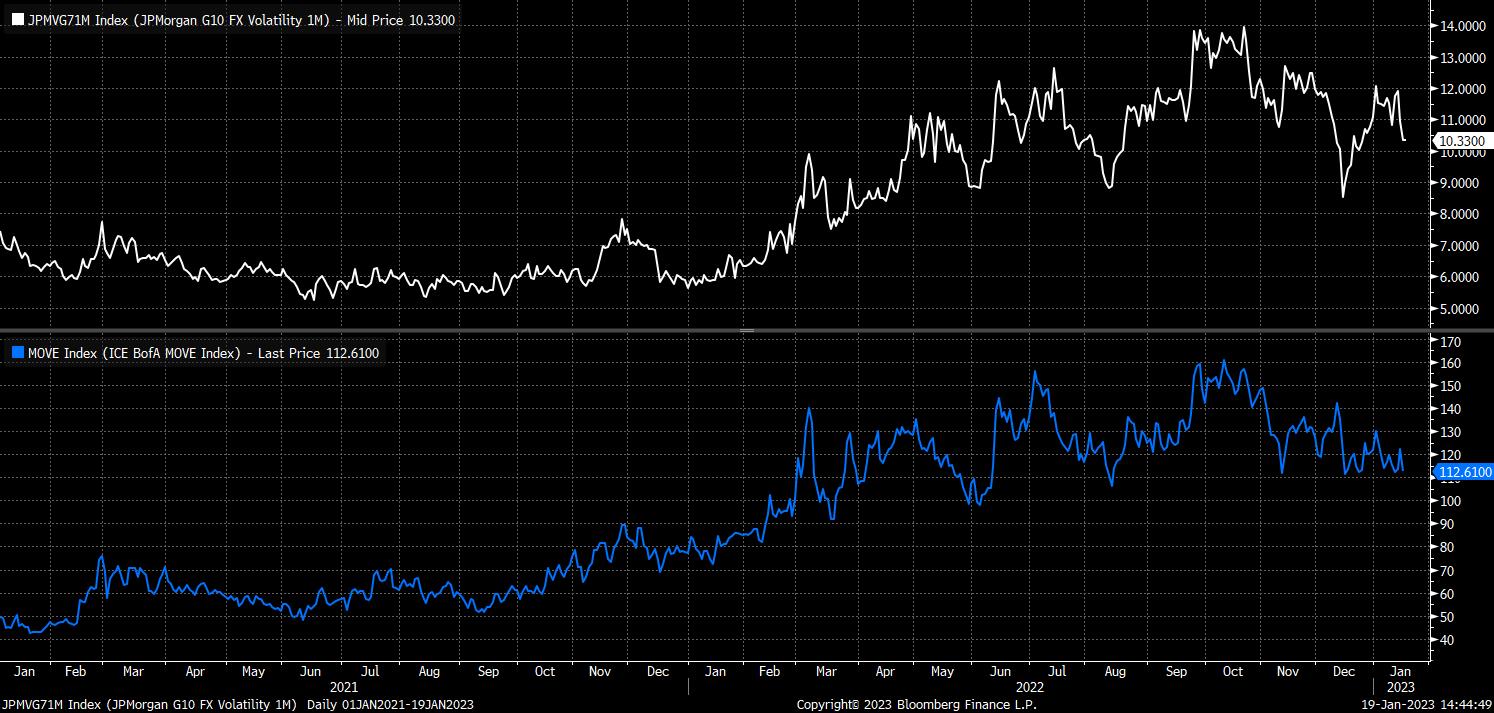Spread bets and CFDs are complex instruments and come with a high risk of losing money rapidly due to leverage. 73.7% of retail investor accounts lose money when trading spread bets and CFDs with this provider. You should consider whether you understand how spread bets and CFDs work, and whether you can afford to take the high risk of losing your money.
- English
- 中文版
Opportunities Abound Across The FX Market
Traditionally, the market has traded off interest rate – or yield – differentials; capital, all else being equal, has a tendency to flow into higher rate regimes, thus boosting demand for currencies that possess higher yields. A classic example of this is USD/JPY, and its tight correlation with Treasury yields – higher US yields typically leads to a stronger greenback and weaker yen as the US-Japan yield spread widens (YCC caps 10yr JGB yields at 0.5%), while the opposite tends to be true if Treasury yields decline, narrowing the yield spread, and fuelling demand for the JPY, as capital flows reverse.
_2023-01-19_14-44-33.jpg)
Speaking of the JPY brings us nicely on to the idea of a carry trade, an idea which involves borrowing (or going short) a low-yielding currency, to purchase a higher-yielding one, with the aim of capturing the interest rate differential between the two currencies involved. This leaves a trader with two opportunities to profit – both from favourable market movement, and by receiving carry – though this also leaves two risks to manage while such positions are open; a significant adverse market move could wipe out any carry that would’ve been earned on the position.
One must often look to FX crosses – pairs involving two majors, but not the USD – to find carry opportunities, by comparing the yield offered by each currency in the G10 universe. Typically, traders use the JPY as a funding currency, given its tendency for low and stable rates, while being long the AUD or NZD, due to the often-wide rate spread between those currencies.
Carry trades, however, often work best in an environment where both FX and rate volatility is low, and expected to be low for a prolonged period of time. As the below shows, that is not presently the case, given the numerous geopolitical risks currently on the market’s radar, in addition to ongoing uncertainties surrounding the stickiness of high inflation, the future direction of central bank policy, and how deep any slowdown in growth is likely to be as the year progresses.

With this in mind, a better longer-term approach to the FX market is to bear in mind the three aforementioned themes, and consider how they may pan out differently in each of the major global economies.
A rapid rise in interest rates, for instance, along with a sharp slowing in economic activity, is likely to prove bad news for economies (and thus currencies) with heavily indebted consumers, and over-leveraged fragile housing markets. Canada and New Zealand are two economies which immediately spring to mind, while economies with a greater proportion of fixed rate mortgages – such as the eurozone and UK – may prove somewhat more resilient.
This prompts some thought at potentially interesting trading opportunities, to take advantage of the relative differences between expected economic performance. Long EUR/CAD may be an interesting option in this arena, with the technical outlook also supporting such a view, especially if the bulls are able to decisively break above the late-2021/early-2022 double top formed at 1.4645.
_2023-01-19_14-44-51.jpg)
Housing is not the only theme that one can gain exposure to via FX crosses. Diverging monetary policy outlooks remain an important theme, particularly with the market pricing at least one rate cut by year-end from each of the BoC, RBA, and RBNZ, while expecting both the BoE and ECB to hold rates at the terminal level. This can be played from two sides, depending on whether or not one takes central bank guidance at face value – fading expectations of rate cuts via long AUD, NZD and CAD positions would be my preferred choice at the present juncture.
The material provided here has not been prepared in accordance with legal requirements designed to promote the independence of investment research and as such is considered to be a marketing communication. Whilst it is not subject to any prohibition on dealing ahead of the dissemination of investment research we will not seek to take any advantage before providing it to our clients.
Pepperstone doesn’t represent that the material provided here is accurate, current or complete, and therefore shouldn’t be relied upon as such. The information, whether from a third party or not, isn’t to be considered as a recommendation; or an offer to buy or sell; or the solicitation of an offer to buy or sell any security, financial product or instrument; or to participate in any particular trading strategy. It does not take into account readers’ financial situation or investment objectives. We advise any readers of this content to seek their own advice. Without the approval of Pepperstone, reproduction or redistribution of this information isn’t permitted..
